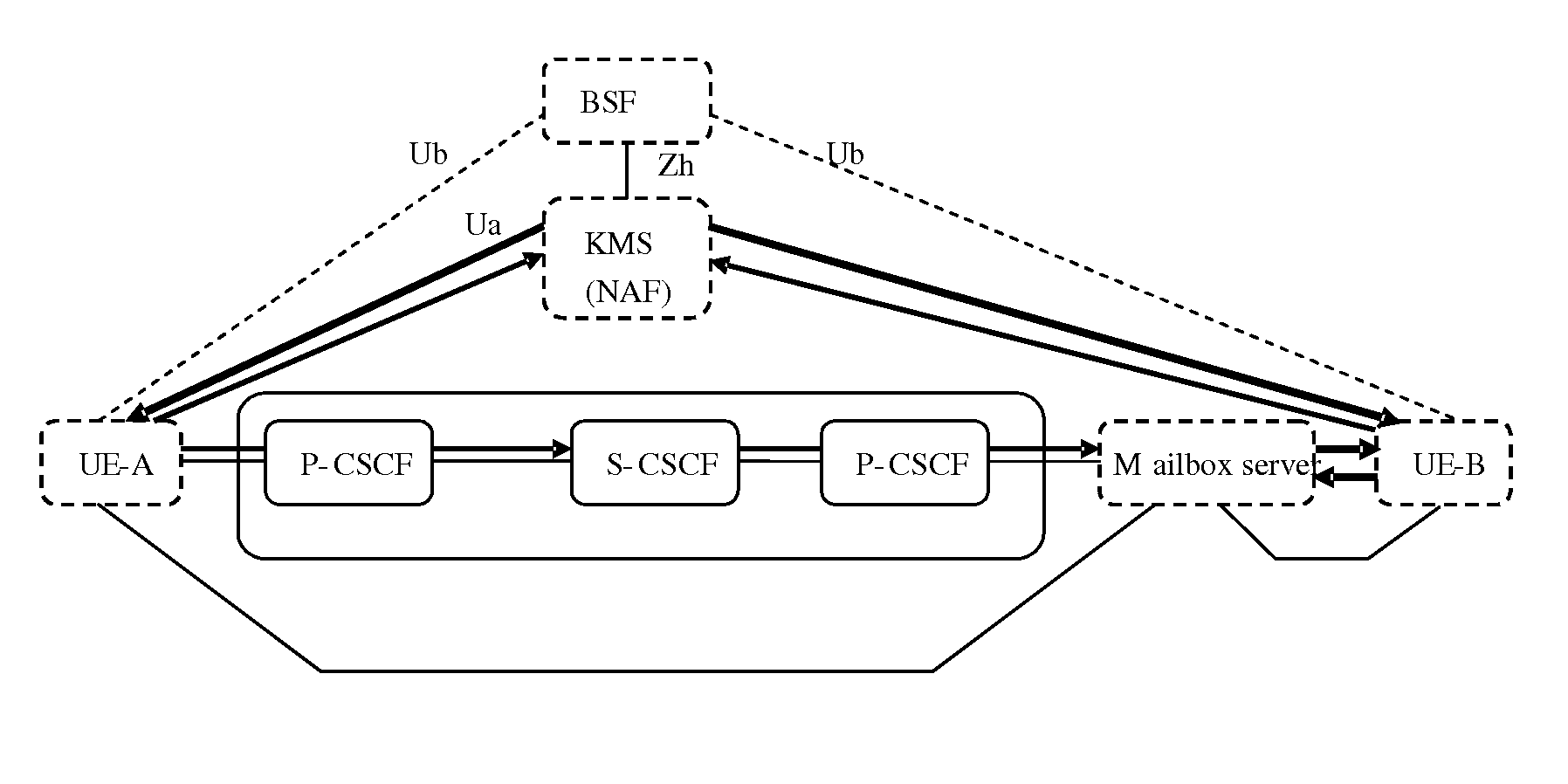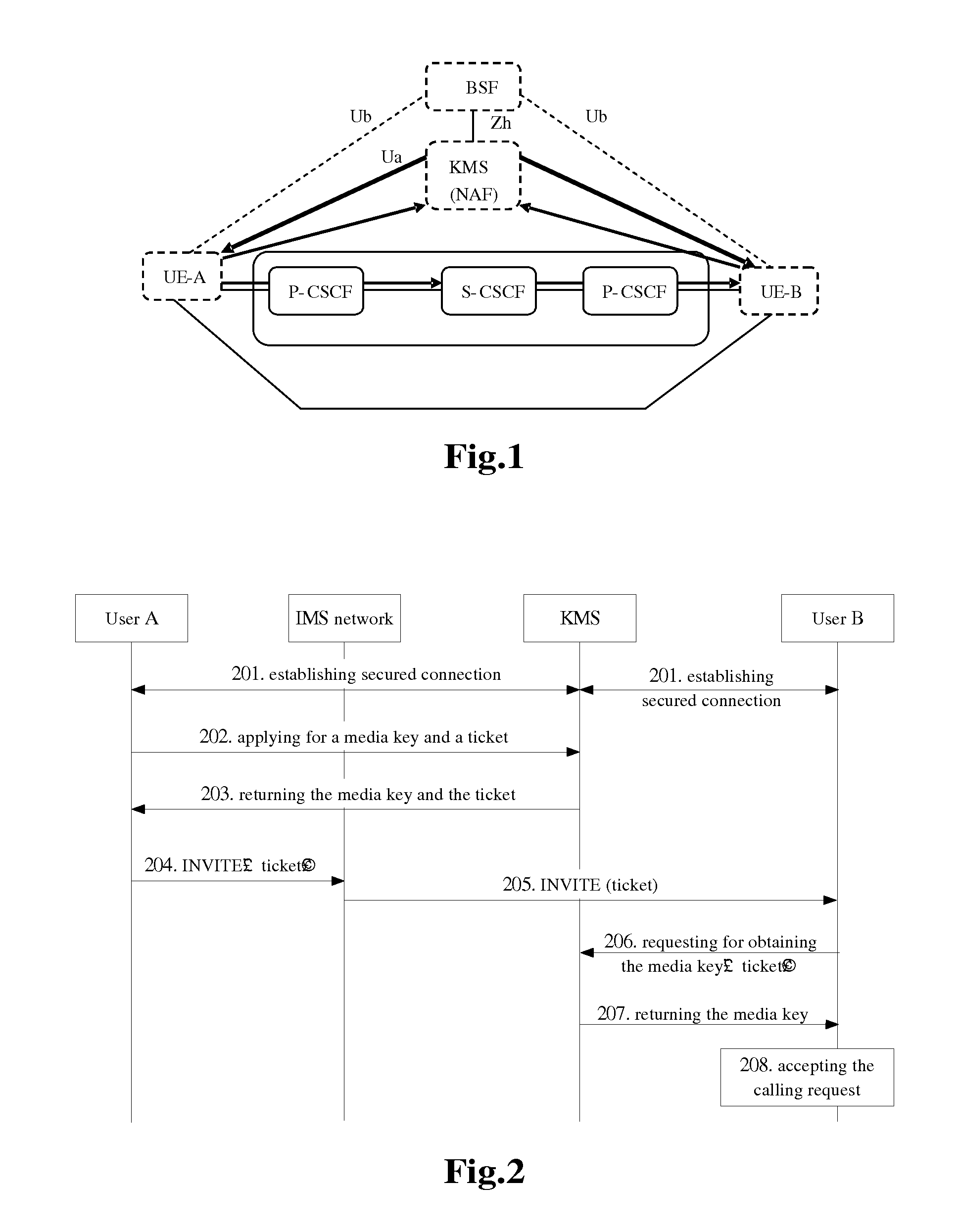Method and system for delaying transmission of media information in internet protocol ( ip) multimedia subsystem
- Summary
- Abstract
- Description
- Claims
- Application Information
AI Technical Summary
Benefits of technology
Problems solved by technology
Method used
Image
Examples
Embodiment Construction
[0086]The core idea of the present invention is that:
[0087]the sending party of media information sends the key generation parameters (which can be a random number) encrypted by a key Ka shared with the KMS to the mailbox server of the receiving party of media information, the mailbox server saves the key generation parameters and sends the key generation parameters to the KMS;
[0088]the KMS obtains the key generation parameters by using the Ka to decrypt, generates a media key K by using the key generation parameters, and sends the media key K to the sending party of media information; after receiving the media key K, the sending party of media information encrypts the media information by using the media key K, and sends the encrypted media information to the mailbox server of the receiving party of media information; and
[0089]after the receiving party of media information is online, the receiving party obtains the key generation parameters saved in the mailbox server, and sends th...
PUM
 Login to View More
Login to View More Abstract
Description
Claims
Application Information
 Login to View More
Login to View More - R&D
- Intellectual Property
- Life Sciences
- Materials
- Tech Scout
- Unparalleled Data Quality
- Higher Quality Content
- 60% Fewer Hallucinations
Browse by: Latest US Patents, China's latest patents, Technical Efficacy Thesaurus, Application Domain, Technology Topic, Popular Technical Reports.
© 2025 PatSnap. All rights reserved.Legal|Privacy policy|Modern Slavery Act Transparency Statement|Sitemap|About US| Contact US: help@patsnap.com



